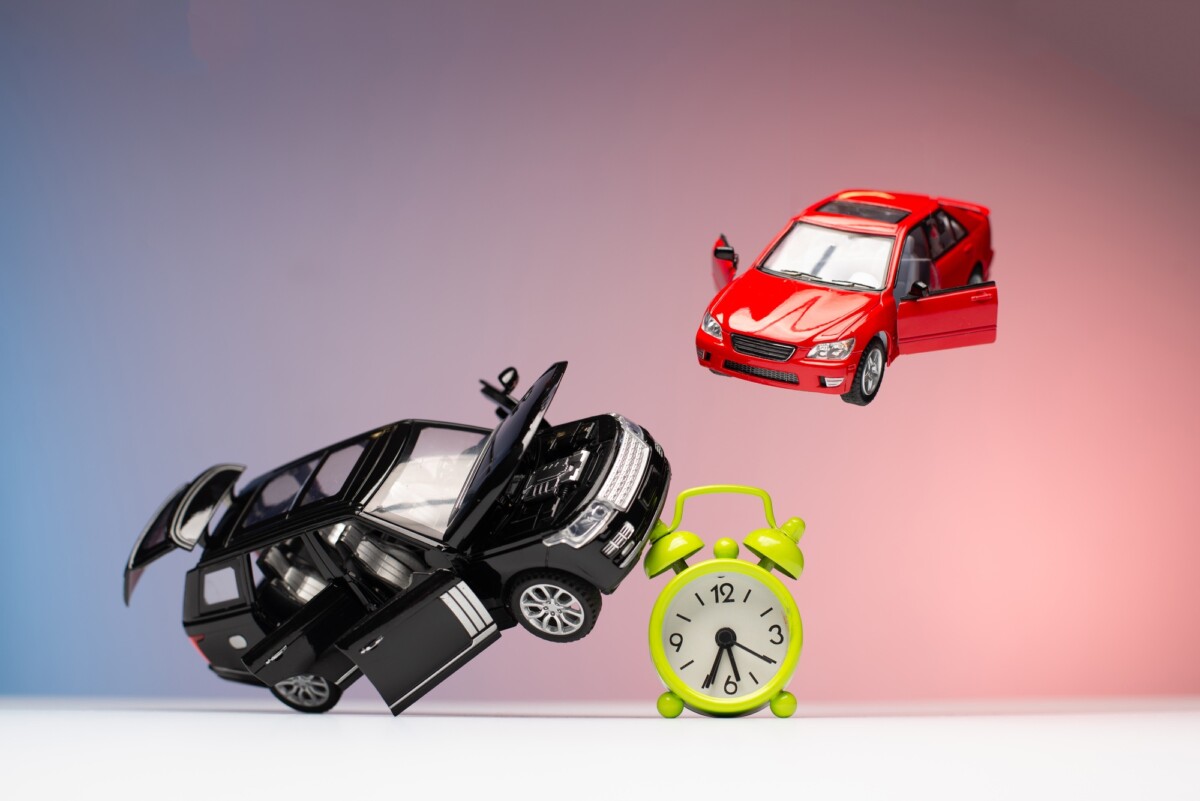
Understanding Gap Insurance: A Comprehensive Overview
Attention: Have you ever wondered what would happen if your car was totaled or stolen, and your insurance payout wasn’t enough to cover what you owe on your loan?
Problem: This financial gap can leave you in a bind, paying for a car you no longer have.
Promise: Gap insurance can bridge this gap, offering peace of mind and financial protection.
What Is Gap Insurance?
Gap insurance, or Guaranteed Asset Protection, is a type of auto insurance that covers the difference between your car’s actual cash value and the amount you still owe on your loan or lease. This is crucial because cars depreciate quickly, and standard insurance might not cover the full loan amount if your vehicle is totaled or stolen.
Who Should Consider It?
- New Car Buyers: If you’ve purchased a new car with a small down payment, gap insurance is advisable since the car’s value depreciates rapidly.
- Leased Vehicles: Lease agreements often require gap insurance, as the lease balance can exceed the car’s market value.
- Long Loan Terms: If your loan term extends beyond 60 months, consider gap insurance to protect against depreciation.
In summary, understanding what gap insurance is and who should consider it can save you from unexpected financial burdens. Whether you’re buying a new car, leasing, or opting for a long-term loan, gap insurance ensures you’re not left paying for a car you no longer have.
Why Gap Insurance Matters: Protecting Your Investment
Imagine driving your brand-new car off the lot, feeling the thrill of your latest purchase. But what if an accident occurs, and your car is totaled? This is where understanding What Is Gap Insurance and Who Should Consider It? becomes crucial. Gap insurance covers the difference between what you owe on your vehicle and its depreciated value, ensuring you’re not left paying for a car you no longer have.
What Is Gap Insurance?
Gap insurance, or Guaranteed Asset Protection, is designed to protect car owners from financial loss. When a car is financed or leased, its value depreciates faster than the loan is paid off. In the event of a total loss, standard insurance only covers the car’s current market value, leaving a potential gap.
Who Should Consider Gap Insurance?
- New Car Buyers: If you’ve just purchased a new vehicle, its value drops significantly once driven off the lot.
- Leased Vehicles: Lease agreements often require gap insurance as part of the contract.
- Low Down Payment: If you put down less than 20%, you might owe more than the car’s worth.
By opting for gap insurance, you ensure peace of mind, knowing that your investment is safeguarded against unforeseen circumstances.
Who Should Consider Gap Insurance? Key Factors to Evaluate
Imagine driving off the lot in your brand-new car, feeling the thrill of the open road. But what if an accident occurs and your car is totaled? This is where understanding What Is Gap Insurance and Who Should Consider It? becomes crucial. Gap insurance covers the difference between what you owe on your car loan and the car’s actual cash value, ensuring you’re not left paying for a car you no longer have.

Searching for affordable auto insurance? Head over to FreeAutoInsuranceQuotes to compare quotes and save on your policy! Have questions? Call us at 833-211-3817 for immediate assistance!
When to Consider Gap Insurance
Gap insurance isn’t for everyone, but certain situations make it a wise choice. If you’ve financed a vehicle with a small down payment or have a long-term loan, you might owe more than the car’s depreciated value. In these cases, gap insurance can save you from financial strain.
Key Factors to Evaluate
- Loan-to-Value Ratio: If your loan amount is higher than the car’s value, gap insurance is advisable.
- Vehicle Depreciation: New cars depreciate quickly; if your car’s value drops faster than you pay off your loan, consider gap insurance.
- Lease Agreements: Leasing often requires gap insurance, as lease terms typically cover only the car’s current value.
By evaluating these factors, you can determine if gap insurance is a smart investment for your situation. It provides peace of mind, ensuring you’re financially protected no matter what happens on the road.
How Does Gap Insurance Work? Breaking Down the Basics
Imagine driving off the lot in your brand-new car, only to face an unfortunate accident shortly after. This is where understanding What Is Gap Insurance and Who Should Consider It? becomes crucial. Gap insurance covers the difference between what you owe on your vehicle and its actual cash value, ensuring you’re not left paying for a car you no longer have.
What Is Gap Insurance?
Gap insurance, or Guaranteed Asset Protection, is a type of auto insurance that helps cover the “gap” between the amount you owe on your car loan and the car’s current market value if it’s totaled or stolen. This is particularly beneficial for those who have financed or leased a vehicle, as cars depreciate quickly.
Who Should Consider It?
- New Car Owners: If you’ve just purchased a new car, gap insurance can protect you from depreciation losses.
- Leased Vehicle Drivers: Leasing often requires gap insurance as part of the agreement.
- Low Down Payment Buyers: If you made a small down payment, you might owe more than the car’s worth early on.
By understanding What Is Gap Insurance and Who Should Consider It?, you can make informed decisions about protecting your financial investment in your vehicle. Whether you’re a new car owner or leasing, gap insurance offers peace of mind against unforeseen financial burdens.
The Benefits of Gap Insurance: More Than Just Coverage
What Is Gap Insurance? Gap insurance, or Guaranteed Asset Protection, covers the difference between your car’s depreciated value and the balance you owe on your auto loan. It’s especially beneficial if your car is totaled or stolen, ensuring you’re not left paying for a car you no longer have.
Who Should Consider It?
- New Car Buyers: If you’ve just purchased a new vehicle, its value depreciates rapidly. Gap insurance protects you from this depreciation.
- High Loan Balances: If your loan balance is higher than the car’s value, gap insurance is a smart choice.
- Leased Vehicles: Leasing often requires gap insurance, as the lease balance can exceed the car’s value.
By understanding what gap insurance is and who should consider it, you can make informed decisions that protect your financial future.
Common Misconceptions About Gap Insurance Explained
Have you ever wondered, What Is Gap Insurance and Who Should Consider It? Picture this: you drive off the lot in your new car, only to face an unfortunate accident a few months later. The insurance payout doesn’t cover the full amount you owe on your loan. This is where gap insurance steps in, bridging the gap between what your car is worth and what you owe.
Understanding Gap Insurance
Gap insurance is often misunderstood. It’s not just for luxury car owners or those with high-interest loans. In reality, anyone with a loan or lease on a rapidly depreciating vehicle should consider it. This coverage ensures you’re not left paying out of pocket if your car is totaled or stolen.
Who Should Consider Gap Insurance?
- New Car Owners: Cars depreciate quickly, sometimes losing up to 20% of their value in the first year.
- Leasing a Vehicle: Lease agreements often require gap insurance.
- Low Down Payment: If you put down less than 20%, you might owe more than the car’s value.
By understanding what gap insurance is and who should consider it, you can make informed decisions about your financial protection. Don’t let common misconceptions deter you from safeguarding your investment.
When Is Gap Insurance Not Necessary? Evaluating Your Needs
Gap insurance, or Guaranteed Asset Protection, covers the difference between what you owe on your car loan and the car’s actual cash value if it’s totaled or stolen. But, is it always necessary? Let’s explore when you might not need it.
When You Might Not Need Gap Insurance
You Paid Cash for Your Vehicle
- If you bought your car outright, gap insurance is unnecessary since there’s no loan balance to cover.
Your Loan Balance is Less Than the Car’s Value
- If your loan balance is lower than your car’s current market value, gap insurance may not be needed.
You Have a Short Loan Term
- Short-term loans often mean less risk of owing more than the car’s worth, reducing the need for gap insurance.
You Made a Large Down Payment
- A substantial down payment can prevent your loan balance from exceeding the car’s value, making gap insurance less critical.
Evaluating your specific situation can help determine if gap insurance is a wise investment. By considering these factors, you can decide if this coverage aligns with your financial needs, ensuring peace of mind without unnecessary costs.
How to Choose the Right Gap Insurance Policy for You
Are you worried about what might happen if your car is totaled or stolen, and you owe more on your loan than the car’s worth? That’s where gap insurance comes in. It bridges the gap between what your car is worth and what you owe. But how do you know if it’s right for you? Let’s explore what gap insurance is and who should consider it.
Understanding Gap Insurance
Gap insurance is a type of auto insurance that covers the difference between the actual cash value of a vehicle and the balance still owed on the financing. This is particularly useful for new cars that depreciate quickly. If your car is totaled or stolen, gap insurance ensures you’re not left paying for a car you no longer have.
Who Should Consider Gap Insurance?
- New Car Owners: If you’ve just driven off the lot, your car’s value has already decreased. Gap insurance can protect you from this rapid depreciation.
- High Loan Balances: If you financed a large amount, gap insurance can prevent financial strain if your car is totaled.
- Long Loan Terms: Extended loan terms mean slower equity building, making gap insurance a wise choice.
Evaluating Your Needs
When choosing a gap insurance policy, consider your car’s depreciation rate, your loan balance, and your financial situation. Compare policies from different providers to find the best coverage and rates. Remember, the right policy will offer peace of mind without breaking the bank.
How FreeAutoInsurance Can Help You Navigate Gap Insurance Options
What Is Gap Insurance?
Gap insurance covers the “gap” between what your car is worth and what you owe on it. This is crucial if your vehicle is totaled or stolen, as standard insurance only pays the car’s current market value.
Who Should Consider Gap Insurance?
- New Car Owners: If you’ve just driven off the lot, your car’s value depreciates rapidly.
- High Loan Balances: If your loan balance is higher than the car’s value.
- Leased Vehicles: Leasing often requires gap insurance.
At FreeAutoInsurance, we simplify the process of choosing the right gap insurance, ensuring you’re protected financially. Our expert team provides personalized advice, helping you weigh the benefits and costs effectively.
FAQ
- What is gap insurance?
Gap insurance covers the difference between your car’s actual cash value and the remaining balance on your loan or lease if your car is totaled. - Who needs gap insurance?
It’s ideal for those with new cars, high loan balances, or vehicles that depreciate quickly. - Is gap insurance required by law?
No, but some lenders or leasing companies may require it. - Can I cancel gap insurance once my loan balance is low?
Yes, you can cancel it once your car’s value exceeds the loan balance. - Does gap insurance cover regular wear and tear?
No, gap insurance only applies to total loss or theft of the vehicle.
Take the next step toward affordable coverage. Visit FreeAutoInsuranceQuotes and get instant quotes that fit your budget and driving needs. If you’d like to speak with a representative, call us at 833-211-3817!
Explore NewAutoInsurance to find a wide range of insurance options tailored to your needs


